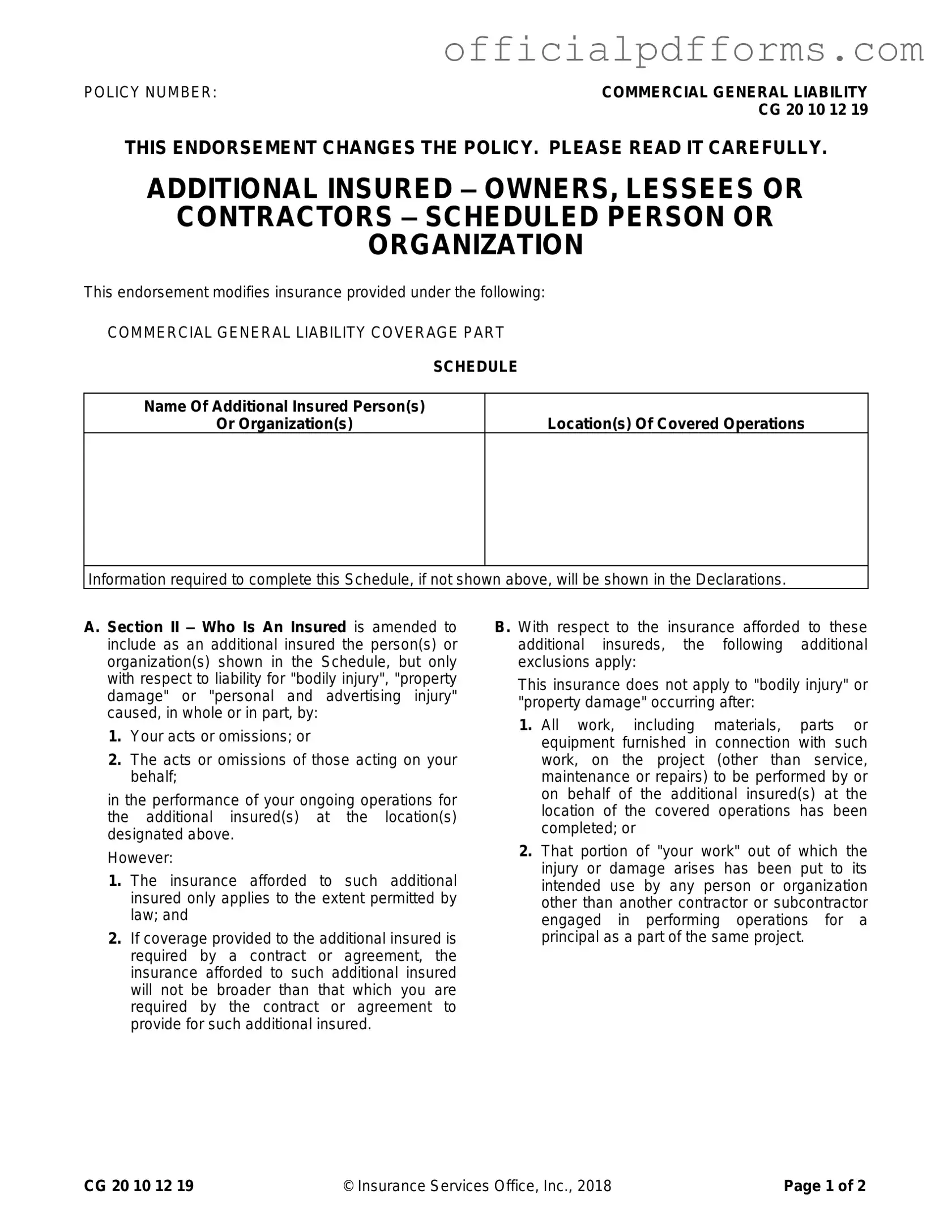The CG 20 10 07 04 Liability Endorsement form is designed to add specific individuals or organizations as additional insureds under a Commercial General Liability policy. This coverage protects these additional insureds from liabilities related to bodily injury, property damage, or personal and advertising injury that may arise from the actions of the primary insured or their representatives during ongoing operations.
Who qualifies as an additional insured under this endorsement?
Additional insureds are the individuals or organizations listed in the endorsement schedule. They are covered only for liabilities resulting from the acts or omissions of the primary insured or their representatives while performing operations for the additional insured at specified locations.
What limitations apply to the coverage for additional insureds?
Coverage for additional insureds is subject to specific limitations:
-
The insurance applies only to the extent permitted by law.
-
If required by a contract, the coverage cannot exceed what the primary insured is obligated to provide.
-
Coverage does not apply if the injury or damage occurs after the completion of all work related to the project.
-
It also excludes incidents arising from work that has been put to its intended use by any party other than another contractor or subcontractor involved in the project.
How does this endorsement affect the limits of insurance?
The endorsement does not increase the overall limits of insurance. If coverage is required by a contract, the maximum payout for the additional insured will be the lesser of the amount specified in the contract or the available limits of the policy.
Can the additional insured status be revoked?
The additional insured status is generally tied to the terms outlined in the endorsement and any related contracts. Revocation can occur if the underlying contract is terminated or if the conditions for coverage are no longer met. It's important to review the specific terms of the contract for details on revocation.
What is the significance of the locations listed in the endorsement?
The locations specified in the endorsement are critical because coverage applies only to liabilities arising from operations conducted at those locations. If operations occur outside of these designated areas, the additional insureds may not be covered under this endorsement.
How should one complete the endorsement schedule?
To complete the endorsement schedule, provide the names of the additional insured persons or organizations and the locations of the covered operations. Ensure that all required information is accurate, as this will determine the extent of coverage provided under the endorsement.
